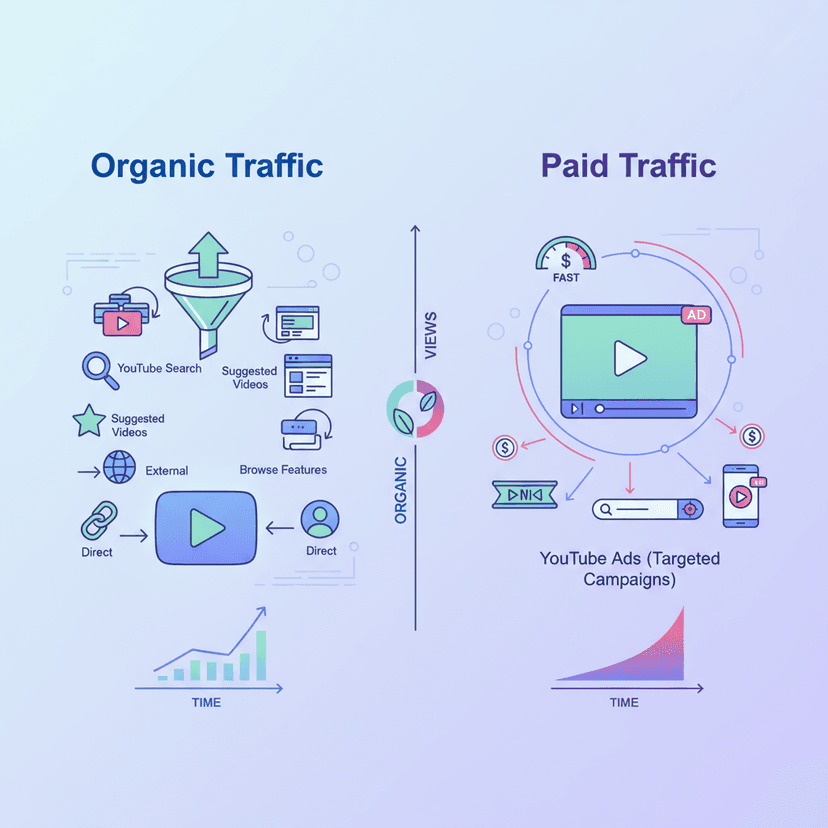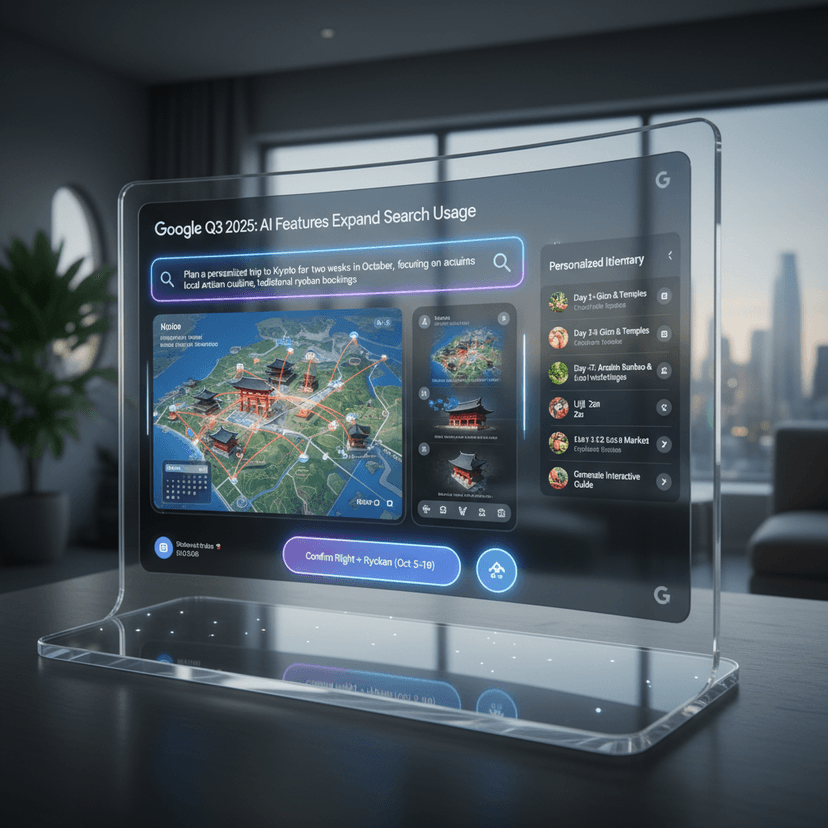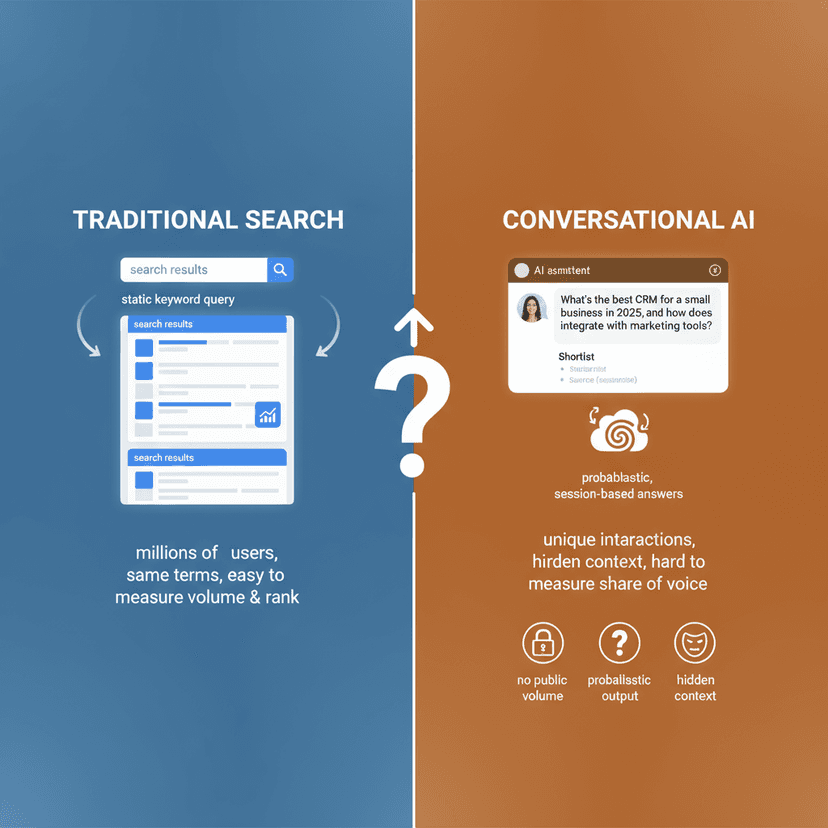Introduction
In the ever-evolving landscape of search engine optimization (SEO), keeping up with Google’s continuous updates and features can be challenging. One of the most significant recent additions to Google’s search results is AI Overviews (AIOs), which provide AI-generated summaries at the top of search results for certain queries. As SEO professionals adapt to this new feature, questions about how these overviews impact search performance metrics have emerged. A recent clarification from Google sheds light on how these AI-powered snippets are tracked in Google Search Console, particularly regarding position reporting.
The introduction of AI Overviews has changed how users interact with search results and consequently how SEO professionals need to analyze traffic and visibility. Understanding how Google measures and reports these interactions is crucial for accurate performance assessment and strategy development. This article examines Google’s recent clarification about how links within AI Overviews are represented in Search Console reports and what this means for SEO analytics. For more information on optimizing your site, consider exploring SEO Thailand.
Understanding AI Overviews
Before diving into the reporting mechanics, it’s essential to understand what AI Overviews are and how they function in Google’s search results. AI Overviews are Google’s AI-generated answer boxes that appear at the top of search results for specific queries. These overviews provide concise summaries drawn from multiple sources across the web, with links to those sources embedded within the overview.
AI Overviews typically appear as expandable boxes that users can interact with to reveal more information and source links. They’re designed to provide quick answers to user queries without requiring them to click through to individual websites. While this offers convenience for users, it has raised concerns among publishers and SEO professionals about potential traffic loss and visibility measurement. To enhance your website’s visibility, you might want to look into Content Marketing.
Unlike traditional featured snippets that usually highlight content from a single source, AI Overviews synthesize information from multiple sources. This multi-source approach makes tracking performance more complex, as multiple websites may receive attribution for a single query result.
Google’s Official Clarification
The confusion surrounding how Google tracks positions for links in AI Overviews prompted SEO consultant Gianluca Fiorelli to ask Google’s Search Advocate John Mueller for clarification. In his response, Mueller referenced Google’s official help documentation and provided additional insight into how these positions are recorded.
According to Mueller: “Basically an AIO counts as a block, so it’s all one position. It can be first position, if the block is shown first, but I don’t know if AIO is always shown first.”
This statement confirms that Google treats an entire AI Overview as a single unit for position reporting purposes. Consequently, all websites referenced within an AI Overview share the same position value in Search Console reports, regardless of where their specific link appears within the overview panel. If you’re interested in improving your site’s ranking, consider learning more about Ecommerce SEO.
Mueller’s clarification also suggests that while AI Overviews often appear at the top of search results (position 1), this might not always be the case. However, in practice, these overview panels typically do appear at the top of results for eligible queries.
How Position Data is Recorded
With Mueller’s clarification, we now understand that when a website’s link appears in an AI Overview, Search Console records its position based on where the entire AI Overview appears in search results, not the specific placement of the link within the overview.
This means that whether your link appears as the first source in an AI Overview or the last, it will be assigned the same position value in Search Console reports. This approach simplifies reporting but makes it impossible to determine which links within an overview might be more prominent or likely to receive clicks based on position data alone. For further insights, you can explore Local SEO.
For SEO professionals accustomed to analyzing position trends to gauge content performance, this consolidated reporting approach requires adjusting analytical frameworks. Position improvements or declines may reflect changes in the placement of the entire AI Overview rather than changes in how Google values your specific content within that overview.
Search Console Documentation on AI Overviews
Google’s Search Console Help documentation provides specific details about how AI Overview metrics are tracked and reported. According to the official documentation, there are three key metrics to understand:
-
Position: “An AI Overview occupies a single position in search results, and all links in the AI Overview are assigned that same position.”
-
Clicks: “Clicking a link to an external page in the AI Overview counts as a click.”
-
Impressions: “Standard impression rules apply. To be counted as an impression, the link must be scrolled or expanded into view.”
The documentation also notes that “Search Console doesn’t include data from experiments in Search Labs, as these experiments are still in active development.” This means that during the testing phase of new features, data may not be comprehensively reported in Search Console. To ensure your website meets best practices, consider checking out SEO Audit.
These official guidelines confirm Mueller’s explanation and provide additional context about how clicks and impressions are counted for links within AI Overviews.
Implications for Click Tracking
While position reporting for AI Overviews is straightforward—all links share the same position—click tracking provides more nuanced data. According to Google’s documentation, each click on a link within an AI Overview is attributed to the respective website, just as it would be for traditional search results.
This click attribution method allows website owners to track how many users are clicking through to their content from AI Overviews. However, without additional context about the overview itself, it can be challenging to determine if click-through rates from AI Overviews differ from those of traditional search listings. For strategies on boosting your click-through rate, consider reading about Lead Generation Service.
For comprehensive analysis, SEO professionals may need to segment their Search Console data to compare performance between queries that trigger AI Overviews and those that don’t. This segmentation can help identify patterns in user behavior and click-through rates specific to AI Overview appearances.
The Impression Counting Method
Google’s approach to counting impressions for links in AI Overviews follows standard rules but with an important caveat: to be counted as an impression, a link must be scrolled or expanded into view. This means that links hidden within collapsed sections of an AI Overview may not receive impression counts until a user expands the section to reveal them.
This visibility-dependent impression counting has significant implications for interpreting impression data in Search Console. For example, if your link consistently appears in the expanded section of an AI Overview, it may receive fewer impressions than links visible without expansion, even though both are technically part of the same overview. To optimize your website for better impressions, you might want to explore Display Advertising.
Understanding this nuance is crucial for accurately interpreting impression metrics and calculating click-through rates. Lower impression counts may not necessarily indicate reduced visibility in search results; they might simply reflect placement within the overview structure.
The Click Attribution Debate
One of the most contentious aspects of AI Overviews is Google’s claim about their impact on click-through traffic. Google has stated that “the links included in AIO get more clicks than if the page had appeared as a traditional web listing for that query.” This claim suggests that being featured in an AI Overview is beneficial for websites in terms of traffic generation.
However, this assertion has been met with skepticism from many SEO professionals who report experiencing the opposite effect. Lily Ray, Vice President of SEO Strategy & Research at Amsive, pointedly challenged this claim, stating: “I would love to see a single GSC report that confirms this statement, because every study so far has shown the opposite.” To better understand the dynamics of online advertising, you can read about Google Ads.
The disconnect between Google’s claim and practitioners’ experiences highlights the need for more transparent data sharing. Without access to comparative data showing click-through rates before and after the implementation of AI Overviews for the same queries, it remains difficult to verify Google’s assertion independently.
Industry Reactions to Google’s Claims
The SEO community’s reaction to Google’s position on AI Overviews and traffic impact has been predominantly skeptical. Many SEO professionals have reported observing traffic decreases coinciding with their content being featured in AI Overviews.
This skepticism stems from a logical concern: if users receive satisfactory answers directly in search results through AI Overviews, they may feel less need to click through to source websites. This “zero-click” search result scenario has been a growing concern for publishers in recent years, and AI Overviews appear to potentially exacerbate this trend. For ways to mitigate such issues, consider looking into Remarketing.
Without comprehensive data from Google supporting their claim that AI Overviews drive more clicks than traditional listings, many SEO professionals continue to question the benefit of having their content featured in these AI-generated summaries. The shared position reporting for all links within an overview further complicates efforts to analyze performance independently.
Challenges in Verifying Traffic Impact
Several factors make it challenging to verify Google’s claims about the traffic impact of AI Overviews:
-
Lack of before-and-after data: Since AI Overviews were implemented across search results simultaneously, there’s limited opportunity to compare performance for the same queries with and without overviews.
-
Position reporting consolidation: As Mueller clarified, all links within an AI Overview share the same position, making it impossible to determine which placements within the overview might perform better.
-
Varying overview formats: AI Overviews can appear differently depending on the query, device, and user, with some expanding automatically and others requiring user interaction.
-
Limited historical data: As a relatively new feature, there’s insufficient historical data to establish long-term performance patterns for content appearing in AI Overviews.
These challenges highlight the need for more granular reporting tools and transparency from Google to help SEO professionals accurately assess the impact of AI Overviews on their traffic and visibility. For assistance in navigating these complexities, you can explore Programmatic.
SEO Strategies for AI Overviews
Despite the challenges in measuring performance, appearing in AI Overviews remains important for visibility. Here are some strategies SEO professionals can implement to optimize for inclusion in these overviews:
-
Focus on comprehensive content: Create content that thoroughly answers common questions in your niche, as AI Overviews often pull from sources that provide complete information.
-
Structured data implementation: Use appropriate schema markup to help Google understand your content and its relevance to specific queries.
-
E-E-A-T principles: Emphasize expertise, experience, authoritativeness, and trustworthiness in your content to increase the likelihood of being featured as a source.
-
Clear, concise writing: Present information in a straightforward manner that’s easy for both users and AI systems to parse.
-
Track query patterns: Identify which types of queries in your niche tend to trigger AI Overviews and optimize content accordingly.
While these strategies won’t guarantee inclusion in AI Overviews, they align with Google’s broader content quality guidelines and may increase your chances of being featured. For expert guidance, consider reaching out to Agencies.
Comparing AIO Performance to Traditional Results
To better understand the impact of appearing in AI Overviews versus traditional search results, SEO professionals can implement several analytical approaches:
-
Query segmentation: Separate queries that trigger AI Overviews from those that don’t, and compare click-through rates for each segment.
-
Timeline analysis: Compare traffic patterns before and after the widespread implementation of AI Overviews for key queries.
-
Position filtering: Filter Search Console data to compare performance when your content appears in position 1 with and without AI Overviews.
-
User behavior metrics: Analyze metrics like bounce rate and time on page for traffic from AI Overviews versus traditional search results.
These comparative analyses can provide insights into how AI Overviews affect user engagement with your content, even without perfect position data. For advanced analytics solutions, you might find Data Security Compliance useful.
Future of AI Overviews Reporting
As AI Overviews become a more established part of Google’s search experience, we might expect more sophisticated reporting tools to emerge. Potential improvements could include:
-
More granular position data: Distinguishing between different placements within an AI Overview.
-
Overview-specific metrics: New metrics designed specifically to measure performance within AI-generated results.
-
Comparative reporting: Tools that directly compare performance for the same queries with and without AI Overviews.
-
Visibility scores: Alternative measurements beyond traditional position reporting that better reflect actual visibility in complex SERP layouts.
Until such improvements arrive, SEO professionals must work with the existing data while acknowledging its limitations. Google’s recent clarification about position reporting is a step toward transparency, but more detailed insights will be necessary as AI continues to transform search results. To stay ahead, consider leveraging Web Design.
Conclusion
Google’s clarification that all links within AI Overviews share a single position in Search Console reports provides important context for SEO professionals analyzing their search performance. This consolidated position reporting simplifies data presentation but makes it more challenging to gain nuanced insights about specific placements within AI-generated summaries.
The ongoing debate about whether AI Overviews increase or decrease click-through traffic highlights the need for more transparent data sharing from Google. While Google claims websites receive more clicks when featured in AI Overviews compared to traditional listings, many SEO professionals report experiencing traffic decreases when their content appears in these summaries.
As AI continues to transform how users interact with search results, SEO strategies and analytics must evolve accordingly. Understanding the current limitations of Search Console reporting for AI Overviews is essential for accurate performance assessment and strategy development. By combining this understanding with comprehensive content optimization approaches, SEO professionals can work to maintain visibility and traffic in an increasingly AI-mediated search landscape.
The full impact of AI Overviews on search visibility and website traffic remains to be seen, but staying informed about how these features are measured and reported is a crucial first step for navigating this new terrain. As Google continues to refine its AI capabilities and reporting tools, the relationship between traditional SEO metrics and AI-powered search features will likely continue to evolve. For any questions or further assistance, feel free to Contact Us.
Source: Searchengineland.com







